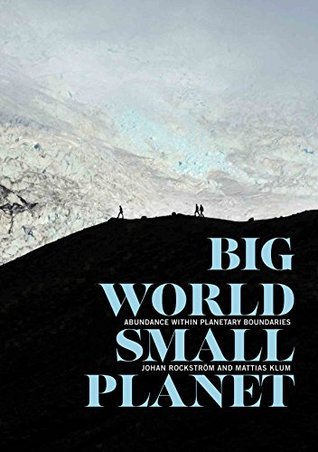More on this book
Kindle Notes & Highlights
We now know how to build sustainable transportation systems by investing in large-scale networks of cycling highways and public transport.
What this tells us is that we need to embrace the technological revolution we’re now experiencing, while also domesticating it. Exponential technologies must have absolute bounds within which they’re allowed to operate. Abundance needs to take place within the safe operating space of planetary boundaries.
No matter how modernized we think we are, how alienated from the natural world, none of us can get by without thriving ecosystems all around us.
The “tragedy of the commons”—in which shared resources are squandered by selfish but, given the rules of the game, “rational” behaviors—has never been more pronounced than today, when separate nations pursuing self-interests have kept the global curves of negative environmental change all pointing the wrong way.
Can transformational change happen fast enough? Well, in truth we do not know, but there are inspiring examples of social tipping points toward sustainable wealth.
What we don’t understand, we ignore. What we don’t measure, we don’t manage.
Scientists and agencies around the world have established a Global Earth Observation System of Systems (GEOSS) covering many of the key planetary boundary processes, from changes in the climate to the chemical composition of the oceans.
To put it simply, we need to measure, measure, measure, not to get certainty, but to understand risk and become cleverer stewards of nature for our own benefit.
We believe the public’s lack of awareness about the global risks we face is largely due to the shortage of user-friendly, attractive, and widely accessible information, and that new scientific insights advance so fast that educational systems can’t keep up. That makes education our number one priority. If every secondary school classroom in the world were to tear down its geological charts and replace them with one that includes the Anthropocene, we would already have come a long way. We need new curricula for high schools and undergraduate programs at universities. Above all, we need to train
...more
Finally, we believe grand experiments are needed to share knowledge with society at large. One idea would be to develop a global network of Earth Situation Rooms—physical or virtual—where citizens across the world could follow, in real time, what’s happening to the planet. Picture a wide circular room, surrounded by large video screens connected to the world’s most advanced Earth-observing satellites and monitoring systems. Here, in one place, citizens could catch up, in real time, on the environmental state of the planet, as well as regional trends, with respect to all of the planetary
...more
It no longer makes sense to us, in fact, to keep talking about a “global commons” or about economic “externalities.” These terms for the complex environment “out there” were developed for the old paradigm, where humans and nature were seen as separate entities. Today, in our big world on a small planet, we’re all part of the same commons, and changes in our shared environment—such as the climate system, the ozone layer, or the global hydrological cycle—rebound directly on local economies. In today’s interconnected and environmentally saturated world, there are no externalities. Everything,
...more
For that reason, we’re proposing that, as political leaders, business managers, and private citizens, we take a dual-track strategy: 1) tackle the most urgent challenges with immediate fixes, while 2) doing everything we can to promote the long-term mind-shift that this book is all about: How to reconnect our human societies—and what we value in life—with the beauty of nature and the resilience of Earth.
We see two obvious opportunities for humanity to jump-start the future immediately. One is a global transformation to a world economy free of fossil fuels and the other is a global transformation to a sustainable food future. Both would solve many of the grand challenges facing humanity, generate social and economic benefits, create stability and security, and yield positive synergies across many planetary boundaries.
Empirical evidence shows that new technologies require a market penetration of approximately 10 percent before they can accelerate to a dominant position.
What we eat has a much larger cost than what we pay.
We’ve forgotten that a stable climate, adequate freshwater supplies, clean air, and biodiversity are all generated by a functioning stratosphere, atmosphere, hydrosphere, biosphere, and cryosphere.
The time has come to put an accurate value on natural capital in economic terms. For some time now, we’ve failed to attribute the full cost of our production and consumption systems. In simple terms, we’ve been cheating ourselves. At the same time that we’ve increased GDP, which is essentially the only aggregate measure of economic progress that we have, we’ve also degraded land, polluted air, destroyed water-supply catchments, cut down rainforests, and contributed to the melting of polar ice sheets. We must reverse that relationship by recognizing that the global economy is, in fact, a
...more
Finding ways to foster human wellbeing on a crowded, increasingly wealthy planet is the newest challenge for humanity. In 1990, an estimated 42 percent of the world’s population was living in absolute poverty (earning less than 1.25 USD per person per day). By 2015, that number may be as low as 10 percent.
Toward that end, Oxfam has recently developed an integrated paradigm, based on the planetary boundaries idea, to address both the social and biophysical challenges of safe and just human development. The ceiling for development would be set by the planetary boundaries (how much ecological space we can appropriate). The safe operating space under the ceiling would then be given a floor, corresponding to basic and universal human requirements for a good life.


